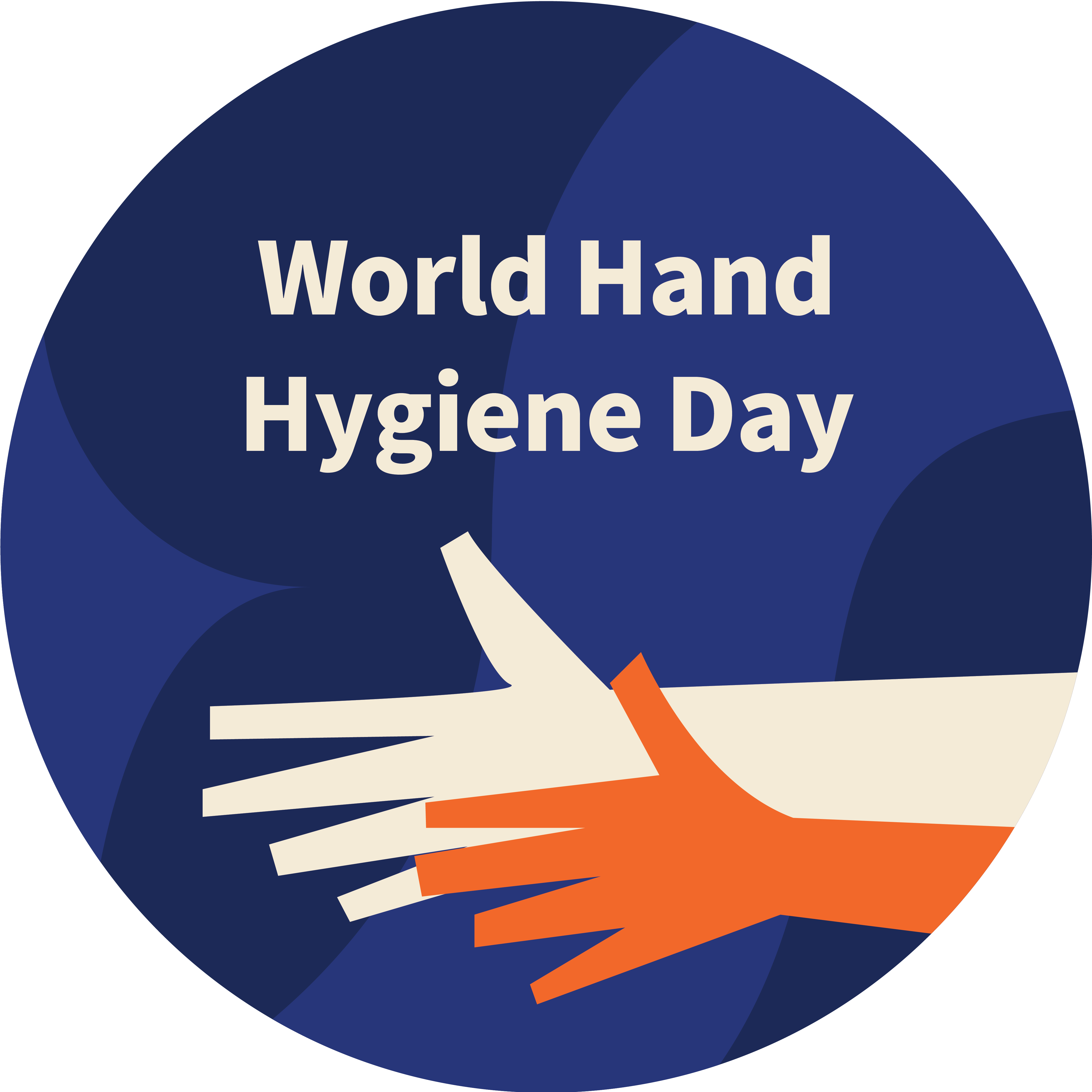Australia’s states and territories Infection Prevention and Control programs – a comparison study
DOI:
https://doi.org/10.3396/ijic.v20.23444Keywords:
Infection Prevention and Control (IPC), Healthcare associated infection (HAI), Infection Control Practitioner (ICP), Clinicians – Health workers including physicians involved in delivery and support of patient careAbstract
Background: Infection prevention and control (IPC) remains a critical component of delivering quality and safe care. However, clinician understanding of and engagement with IPC remain inconsistent (1–3). In addition, IPC governance, structure and organisation impact on clinician engagement are not well described. Available publications are limited to healthcare-associated infection (HAI) surveillance and do not reflect the broader IPC program (4–6). As Australia establishes a national coordinating body similar to a Centers for Disease Control and Prevention (CDC), a comparison of jurisdictional IPC provides essential contemporary information to inform the national body.
Method: This study examined the characteristics of jurisdictional (states and territories) IPC programs in Australia and was conducted in two phases. Phase one examined outward facing websites likely to be accessed by clinicians, and phase two surveyed jurisdictional programs using a qualitative questionnaire.
Results: Whilst each jurisdiction had accessible website content, this varied considerably in terms of governance, structure, content, ease of navigation, accessibility and visibility. There was a lack of national focus within jurisdictional programs and websites. Four of eight jurisdictions did not have a formal statewide IPC program at the time of the survey. Variance was reported in governance, structures, focus and program elements.
Conclusion: Inconsistent IPC governance and structure demonstrates poorly aligned Australian IPC programs that may contribute to poor clinician understanding and engagement with IPC. Implementing a coordinated and consistent approach to governance, website design and layout would facilitate a consolidated approach to IPC nationally, which may facilitate clinician understanding and engagement. Shaping IPC nationally would also provide solid IPC foundations to support an Australian CDC.
Downloads
References
Kim H, Hwang YH. Factors contributing to clinical nurse compliance with infection prevention and control practices: a cross-sectional study. Nurs Health Sci 2020; 22(1): 126–33. doi: 10.1111/nhs.12659
Cole M. Compliance and infection control guidelines: a complex phenomenon. Br J Nurs 2008; 17(11): 700–4. doi: 10.12968/bjon.2008.17.11.29615
Gilbert GL, Kerridge I. The politics and ethics of hospital infection prevention and control: a qualitative case study of senior clinicians’ perceptions of professional and cultural factors that influence doctors’ attitudes and practices in a large Australian hospital. BMC Health Serv Res 2019; 19(1): 1–10. doi: 10.1186/s12913-019-4044-y
Russo PL, Cheng AC, Richards M, Graves N, Hall L. Healthcare-associated infections in Australia: time for national surveillance. Aust Health Rev 2014; 39(1): 37–43. doi: 10.1071/AH14037
Mitchell BG, Shaban RZ, MacBeth D, Wood C-J, Russo PL. The burden of healthcare-associated infection in Australian hospitals: a systematic review of the literature. Infect Dis Health 2017; 22(3): 117–28. doi: 10.1016/j.idh.2017.07.001
Russo PL, Cheng AC, Richards M, Graves N, Hall L. Variation in health care-associated infection surveillance practices in Australia. Am J Infect Contr 2015; 43(7): 773–5. doi: 10.1016/j.ajic.2015.02.029
Stewart S, Robertson C, Pan J, Kennedy S, Dancer S, Haahr L, et al. Epidemiology of healthcare-associated infection reported from a hospital-wide incidence study: considerations for infection prevention and control planning. J Hosp Infect 2021; 114: 10–22. doi: 10.1016/j.jhin.2021.03.031
Baswa A, Russo PL, Doyle JS, Ayton D, Stewardson AJ. Experience and perspectives of infection prevention staff of the COVID-19 response in Australian hospitals. Antimicrob Resist Infect Contr. 2022; 11(1): 77. doi: 10.1186/s13756-022-01116-9
Lowe H, Woodd S, Lange IL, Janjanin S, Barnet J, Graham W. Challenges and opportunities for infection prevention and control in hospitals in conflict-affected settings: a qualitative study. Conflict Health 2021; 15(1): 1–10. doi: 10.1186/s13031-021-00428-8
Houghton C, Meskell P, Delaney H, Smalle M, Glenton C, Booth A, et al. Barriers and facilitators to healthcare workers’ adherence with infection prevention and control (IPC) guidelines for respiratory infectious diseases: a rapid qualitative evidence synthesis. Cochrane Database Syst Rev 2020; 4: CD013582. doi: 10.1002/14651858.CD013582
Tomczyk S, Twyman A, de Kraker ME, Rehse APC, Tartari E, Toledo JP, et al. The first WHO global survey on infection prevention and control in health-care facilities. Lancet Infect Dis 2022; 22(6): 845–56. doi: 10.1016/S1473-3099(21)00809-4
Storr J, Twyman A, Zingg W, Damani N, Kilpatrick C, Reilly J, et al. Core components for effective infection prevention and control programmes: new WHO evidence-based recommendations. Antimicrob Resist Infect Contr 2017; 6: 1–18. doi: 10.1186/s13756-016-0149-9
Russo PL, Havers SM, Cheng AC, Richards M, Graves N, Hall L. Characteristics of national and statewide health care–associated infection surveillance programs: a qualitative study. Am J Infect Contr 2016; 44(12): 1505–10. doi: 10.1016/j.ajic.2016.06.034
Gesser-Edelsburg A, Cohen R, Halavi AM, Zemach M, van Heerden PV, Sviri S, et al. Beyond the hospital infection control guidelines: a qualitative study using positive deviance to characterize gray areas and to achieve efficacy and clarity in the prevention of healthcare-associated infections. Antimicrob Resist Infect Contr 2018; 7(1): 1–10. doi: 10.1186/s13756-018-0418-x
Chughtai AA, Seale H, Rawlinson WD, Kunasekaran M, Macintyre CR. Selection and use of respiratory protection by healthcare workers to protect from infectious diseases in hospital settings. Ann Work Expos Health 2020; 64(4): 368–77. doi: 10.1093/annweh/wxaa020
Murphy CL, McLaws M-L. Who coordinates infection control programs in Australia? Am J Infect Contr 1999; 27(3): 291–5. doi: 10.1053/ic.1999.v27.a92961
Health AIo, Welfare. Health system overview. Canberra: AIHW; 2022.
Care ACoSaQiH. National safety and quality health service standards. 2nd ed. – version 2. Sydney: ACSQHC; 2021.
Gilbert GL. A brief history of 70-years’ hospital IPC in Australia. ACIPC Absttract Book 2021. Available from: https://acipcconference.com.au/events/a-brief-history-of-70-years-hospital-ipc-in-australia/ [cited 10 May 2024].
Hall L, Halton K, Macbeth D, Gardner A, Mitchell B. Roles, responsibilities and scope of practice: describing the ‘state of play’for infection control professionals in Australia and New Zealand. Healthc Infect 2015; 20(1): 29–35. doi: 10.1071/HI14037
McLaws M-L, Taylor P. The Hospital Infection Standardised Surveillance (HISS) programme: analysis of a two-year pilot. J Hosp Infect 2003; 53(4): 259–67. doi: 10.1053/jhin.2002.1361
Morton AP, Clements AC, Doidge SR, Stackelroth J, Curtis M, Whitby M. Surveillance of healthcare-acquired infections in Queensland, Australia: data and lessons from the first 5 years. Infect Contr Hosp Epidemiol 2008; 29(8): 695–701. doi: 10.1086/589904
Russo PL, Bull A, Bennett N, Boardman C, Burrell S, Motley J, et al. The establishment of a statewide surveillance program for hospital-acquired infections in large Victorian public hospitals: a report from the VICNISS Coordinating Centre. Am J Infect Contr 2006; 34(7): 430–6. doi: 10.1016/j.ajic.2005.06.013
Van Gessel H, McCann RL, Peterson AM, Goggin LS. Validation of healthcare-associated Staphylococcus aureus bloodstream infection surveillance in Western Australian public hospitals. Healthc Infect 2010; 15(1): 21–5. doi: 10.1071/HI09028
Arianpoor A, Zarifian A, Askari E, Akhavan-Rezayat A, Dayyani M, Rahimian A, et al. “Infection prevention and control idea challenge” contest: a fresh view on medical education and problem solving. Antimicrob Resist Infect Contr 2020; 9(1): 1–10. doi: 10.1186/s13756-020-0688-y
Basseal J, Bennett C, Collignon P, Currie B, Durrheim D, Leask J, et al. Key lessons from the COVID-19 public health response in Australia. Lancet Regional Health–Western Pacific 2023; 30: 100616. doi: 10.1016/j.lanwpc.2022.100616
Ayton D, Tsindos T, Berkovic D. Qualitative Research: A Practical Guide for Health and Social Care Researchers and Practitioners. Australia: Council of Australian University Librarians, Open Educational Resources Collective; 2023.
Assariparambil AR, Nayak SG, Sugunan A, Mukhopadhyay C, Shankar R, Devi ES, et al. Structure, staffing, and factors affecting infection control nurses: hospital based exploratory survey – a study protocol. J Adv Nurs 2021; 77(2): 1062–9. doi: 10.1111/jan.14658
Shaban RZ, Macbeth D, Vause N, Simon G. Documentation, composition and organisation of infection control programs and plans in Australian healthcare systems: a pilot study. Infect Dis Health. 2016;21(2):51–61. doi: 10.1016/j.idh.2016.04.002
Allegranzi B, Kilpatrick C, Storr J, Kelley E, Park BJ, Donaldson L. Global infection prevention and control priorities 2018–22: a call for action. Lancet Global Health 2017; 5(12): e1178–e80. doi: 10.1016/S2214-109X(17)30427-8
Zingg W, Holmes A, Dettenkofer M, Goetting T, Secci F, Clack L, et al. Hospital organisation, management, and structure for prevention of health-care-associated infection: a systematic review and expert consensus. Lancet Infect Dis. 2015; 15(2): 212–24. doi: 10.1016/S1473-3099(14)70854-0
Alyahya MS, Hijazi HH, Al Qudah J, AlShyab S, AlKhalidi W. Evaluation of infection prevention and control policies, procedures, and practices: an ethnographic study. Am J Infect Contr 2018; 46(12): 1348–55. doi: 10.1016/j.ajic.2018.05.023
McCauley L, Kirwan M, Matthews A. The factors contributing to missed care and non-compliance in infection prevention and control practices of nurses: a scoping review. Int J Nurs Stud Adv 2021; 3: 100039. doi: 10.1016/j.ijnsa.2021.100039
McKenzie KE, Mayorga ME, Miller KE, Singh N, Arnold RC, Romero-Brufau S. Notice to comply: a systematic review of clinician compliance with guidelines surrounding acute hospital-based infection management. Am J Infect Contr 2020; 48(8): 940–7. doi: 10.1016/j.ajic.2020.02.006
Cook E, Marchaim D, Kaye KS. Building a successful infection prevention program: key components, processes, and economics. Infect Dis Clin 2011; 25(1): 1–19. doi: 10.1016/j.idc.2010.11.007
Brusaferro, S. Infection control in Europe. In: Walker J.T. (ed). Decontamination in Hospitals and Healthcare. Cambridge: Woodhead Publishing; 2014, 60–91. doi: 10.1533/9780857096692.1.60
Gould DJ, Gallagher R, Allen D. Leadership and management for infection prevention and control: what do we have and what do we need?. J Hosp Infect. 2016; 94(2): 165–168. doi: 10.1016/j.jhin.2016.07.005
Henman LJ, Corrigan R, Carrico R, Suh KN, Anderson K, Boukidjian R, et al. Identifying changes in the role of the infection preventionist through the 2014 practice analysis study conducted by the Certification Board of Infection Control and Epidemiology, Inc. Am J Infect Contr 2015; 43(7): 664–8. doi: 10.1016/j.ajic.2015.02.026
Mitchell BG, MacBeth D, Halton K, Gardner A, Hall L. Resourcing hospital infection prevention and control units in Australia: a discussion paper. Infect Dis Health 2017; 22(2): 83–8. doi: 10.1016/j.idh.2017.02.001
Pogorzelska M, Stone PW, Larson EL. Certification in infection control matters: impact of infection control department characteristics and policies on rates of multidrug-resistant infections. Am J Infect Contr 2012; 40(2): 96–101. doi: 10.1016/j.ajic.2011.10.002
Saint S, Kowalski CP, Banaszak-Holl J, Forman J, Damschroder L, Krein SL. The importance of leadership in preventing healthcare-associated infection: results of a multisite qualitative study. Infect Contr Hosp Epidemiol 2010; 31(9): 901–7. doi: 10.1086/655459
Published
How to Cite
Issue
Section
License
Copyright (c) 2024 Kathy Dempsey, Susan Jain, Patricia Bradd, Kate Clezy, David Greenfield

This work is licensed under a Creative Commons Attribution 4.0 International License.
Authors retain copyright of their work, with first publication rights granted to IJIC. Read the full Copyright- and Licensing Statement.




